Have you ever wondered what optimal tree pruning heights are? When deciding how high to prune your trees, it is easy to wonder how high they should actually be pruned. In many cases the height is completely up to the home/property owner, but there are certain cases when it is better to prune them higher and some situations when it is fine to leave them lower.
Here are some things to consider when determining optimal pruning options for your trees:
All Trees: Most municipalities require street trees or trees that grow over sidewalks and roads to be at a certain height. In most cases this is about 8 feet over the sidewalk and 13 feet over the street, and street signs must also be visible from 150 feet away. Not having your tree pruned to these heights can sometimes result in fines or branches being broken by vehicles passing by. This is not required for young trees which are not tall enough to be pruned to these heights, but they will still need to be pruned to prevent damage to their lower limbs by passing vehicles.
Evergreens: While some trees don’t have lower branches from a young age, evergreens can have many lower branches that often touch the ground. Thankfully they are not usually prone to competing with the central stem so leaving them is fine in most cases. In some situations, it is a good idea to remove a few feet of the lower branches such as when excessive amounts of moisture are present. Needlecast diseases can spread and cause needles on the lower areas of the tree to discolor and drop. They are rare in the Front Range due to the dry climate, but when trees are overwatered and have inadequate draining these diseases can occur.
Deciduous: Deciduous trees can often have lower branches that arise early in their life or due to stress. If left to grow these branches can become too large to remove with a simple pruning without stressing out the tree or leaving it susceptible to infection or decay.
A deciduous tree is one that sheds leaves on an annual basis (typically this happens in the fall or winter). These trees go through a process called leaf senescence, which is triggered by changes in temperature, daylight, and water availability. As the leaves prepare to fall, the tree moves nutrients and resources to the branches and roots to survive the winter. Deciduous trees are common in temperate regions and provide stunning color displays as they change throughout the seasons. Examples of these trees include maple trees, elm trees, oak trees, etc.
When health and ordinances are not a concern, the optimal tree pruning heights can be determined by the owners personal preference — trees can be pruned to any height. Most home/property owners prefer to leave their trees as low as possible when they are younger and they opt to have the limbs pruned up only to allow for any necessary landscaping to be planted underneath the canopy.
To receive a free estimate for your next tree pruning project, contact one of Splintered Forest’s ISA Certified Arborists to discuss your options. Call us today at (303) 819-9840, text us or submit a form online to schedule your no obligation consultation today!
Sources:
https://extension.colostate.edu/docs/misc/NeedleCasts.pdf
Frost cracks are vertical splits in the bark of a tree and are most often associated with smoother barked trees. These cracks are common in young Maple trees and Sycamore or London-Plane Trees. Warming and cooling of the bark and underlying wood causes the bark to split when it rapidly cools, but the wood underneath does not.
While similar in nature, sunscald is a more damaging wound for a tree. Usually occurring on the south or southwest side of the tree, the increased temperature causes cells to exit dormancy and begin to transport water. However, with normal Winter night temperatures, the cells then freeze and the rapidly expanding water causes cells to burst and die. Sunscald can either appear as patches of damage or jagged edge cracks.
The easiest method for protecting young trees from frost cracks is to protect the bark from changing temperatures. Tree wrap offers a simple and cost effective method for protecting the bark from the sudden changes in temperature by blocking sunlight and retaining some heat to prevent the cells underneath from refreezing after heating up. Crepe paper wraps should be light in color and wrapped on the trunk of the tree up to the first branch. It should be applied as early as late-November and removed by mid-April to prevent retention of moisture, which can cause fungal growth. It is important to note that tree wraps should only be used for the first few years after planting as by then the tree should have developed a thick enough bark to not be affected by significant heating and freezing.
If your tree already has Winter damage, then the best thing to do is to help it recover from its wounds and start to compartmentalize the damage. Mulching to help the tree retain water and fertilizing to ensure the tree has all the nutrients it needs will help keep your tree healthy and better suited to survive any damage caused or pests that may take the opportunity to attack the stressed tree.
If you are worried that your tree may have experienced some damage or want to discuss options for protecting them, give the Splintered Forest Tree Services team a call today! Our Plant Health Care specialists are available to discuss your options to keep your trees in optimal health. Call us today at 303-819-9840 or request your Plant Health Care appointment for a free estimate for frost cracks and many other services to keep trees healthy.
Sources:
https://cmg.extension.colostate.edu/Gardennotes/653.pdf
https://www.canr.msu.edu/news/frost_cracks_in_trees
https://www.canr.msu.edu/news/frost_cracks_and_winter_damage_to_trees
In the realm of evergreen trees, the distinction between spruces, pines, firs, and Douglas firs may seem elusive, as they share the timeless allure of coniferous beauty. However, subtle differences in needle arrangements, textures, and cone characteristics provide valuable clues to unveil the identity of these majestic trees on your property.
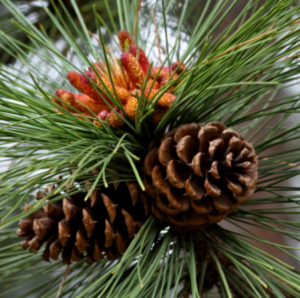
Pine trees are characterized by needle clusters ranging from 2 to 5, depending on the species. Notably, pines never exhibit singular needles. Distinguishing them further, pines boast canopies with less dense needle coverage compared to firs and spruces. Examining their cones reveals a sturdier and more woody texture compared to their coniferous counterparts.
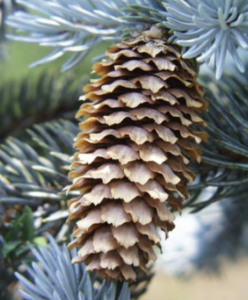
Spruces stand out with needles that emerge individually from the branch, presenting a singular, squared appearance. Run your fingers along spruce needles, and you’ll notice their sharp points. Additionally, the needles of spruces can be easily rolled between your fingers, enhancing their distinct texture. When observing their cones, spruces exhibit a softer feel and thinner scales, giving them a more flexible and bendable nature.
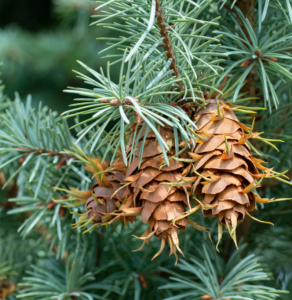
Both Douglas-fir and true fir trees share the characteristic of having singular needles extending from the branch. However, distinguishing between them involves the texture of the needles. Fir needles are flat and lack the rigidity found in spruce needles. Unlike spruces, fir needles are not easily rolled between your fingers, offering a softer touch. When handling their cones, firs display a similar flexibility, featuring softer scales that set them apart from the sturdier cones of pines. Fir cones also have a bract that sticks down between the scales which makes them distinctive.
Understanding these nuanced differences in coniferous trees becomes not only an aesthetic pursuit but also a practical skill. Identifying these evergreens proves valuable when planning landscape designs or seeking arborist advice on potential pests and diseases that may impact them. With this knowledge, you can embark on a journey of appreciating and caring for the diverse tapestry of evergreen wonders that grace your surroundings.
Hardwood and softwood, while terms often associated with the density of wood, actually refer to two distinct types of trees. Hardwoods come from deciduous trees that shed their leaves annually, such as oak, maple, and cherry. Softwoods, on the other hand, are derived from coniferous, evergreen trees like pine, spruce, and cedar. The distinction between the two lies in the structure of the trees and the types of seeds they produce rather than the hardness of the wood.
Hardwoods are known for their dense and durable composition, making them well-suited for a variety of applications. Commonly used in furniture construction, hardwoods contribute to pieces with a timeless and sturdy quality. Oak, for instance, is prized for its strength and beautiful grain patterns. Maple is favored for its light color and fine texture, often used in cabinets and flooring. In contrast, softwoods, with their more porous and lightweight characteristics, find extensive use in construction, particularly for framing, decking, and various outdoor applications. Softwood lumber is often employed in building structures due to its affordability and versatility.
While both hardwoods and softwoods serve diverse purposes, understanding their unique properties allows for informed decision-making in selecting the right type of wood for a specific project. Whether crafting fine furniture with hardwoods or constructing outdoor structures with softwoods, each type brings its own set of advantages and aesthetic qualities to the world of woodworking and construction.
When it comes to firewood, the distinction between hardwoods and softwoods is crucial. Softwoods ignite more quickly, making them excellent for use as fire starters. On the other hand, hardwoods burn at a slower and more sustained pace, making them the ideal choice for adding to the fireplace before retiring for the night. The difference in burn rates between these two types of wood allows for strategic use based on specific needs, whether it’s for quickly establishing a warm fire or ensuring a longer-lasting source of heat.
*Important note: If stacking large amounts of firewood outside, only kiln dried firewood will prevent the spread of EAB Emerald ash borer to near by ash trees.
Being able to identify these different trees can be useful in planning for planting a new tree in your landscape or when consulting an arborist about certain pests and diseases that may affect them.
Are you interested in Planting Trees near your home? Splintered Forest Arborists can help determine the best trees to plant on your property with a Plant Health Care assessment of your land. Contact Splintered Forest Plant Health Care today to set up a free estimate for Tree Planting.
Sources:
https://www.extension.iastate.edu/news/2005/nov/061401.htm
https://ohioline.osu.edu/factsheet/anr-80
In recent years, wood chip landscaping has gained popularity among garden enthusiasts. This natural material not only enhances the aesthetic appeal of your garden but also provides various benefits for the plants. If you’re looking to create a beautiful, sustainable garden, understanding the basics of wood chip landscaping is essential.
Wood chip landscaping is a popular choice for many gardeners due to its versatility and functionality. By incorporating wood chips into your garden, you can enjoy a range of benefits that will enhance the overall health and appearance of your outdoor space.
Wood chips are small pieces of wood that have been processed from various tree species. They can be obtained from local tree service companies or by chipping your own tree trimmings. These chips are an excellent landscaping material that can be used in a variety of ways to improve your garden.
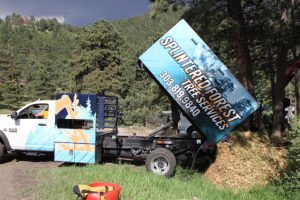
Schedule Free Wood Chip Delivery
There are several advantages to incorporating wood chips into your garden:
In addition to these benefits, wood chips also add aesthetic appeal to your garden. They provide a natural and rustic look that can complement various garden styles, from formal to informal. Whether used as a pathway material, a mulch around plants, or as a decorative element in garden beds, wood chips can enhance the visual appeal of your outdoor space.
When using wood chips in your garden, it’s important to consider the type of wood being used. Some tree species, such as cedar or cypress, are more resistant to decay and can last longer as mulch. It’s also essential to apply wood chips at an appropriate depth to maximize their benefits without smothering plant roots.
Overall, wood chip landscaping offers a range of advantages that can significantly improve the health and beauty of your garden. By incorporating wood chips into your landscaping practices, you can create a sustainable and thriving outdoor environment that you can enjoy for years to come.
Schedule Free Wood Chip Delivery
When it comes to selecting wood chips for your garden, there are several options to consider. Each type of wood chip has its own unique characteristics and benefits. By understanding these differences, you can make an informed decision that will best suit your gardening needs.
Let’s take a closer look at the different types of wood chips available:
Before making a purchase, it’s important to consider the following factors:
By considering these factors and understanding the different types of wood chips available, you can make an informed decision that will benefit your garden in the long run. Remember, the right wood chips can not only enhance the aesthetics of your garden but also contribute to the overall health and vitality of your plants.
Schedule Free Wood Chip Delivery
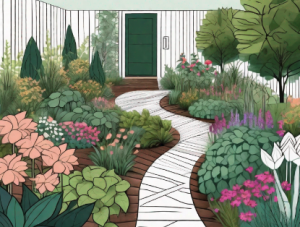
Prior to applying wood chips, make sure to prepare your garden appropriately:
Follow these steps to properly apply wood chips in your garden:
To keep your wood chip landscape in top condition, maintenance tips:
Occasionally, you may encounter common issues with your wood chip landscape:
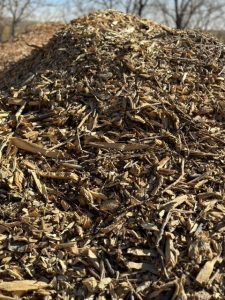
Wood chip landscaping aligns with sustainable gardening practices in several ways:
To minimize the environmental impact of your garden, consider implementing the following practices:
Wood chip landscaping is a versatile and sustainable option for creating a beautiful garden. By understanding the basics, choosing the right wood chips, and applying them correctly, you can enjoy the many benefits they provide. Regular maintenance and sustainable practices will ensure your wood chip landscape thrives while minimizing its environmental impact. Embrace this natural material and transform your garden into a captivating oasis.
Have wood chips delivered right to your property, school or community garden!
Schedule Free Wood Chip Delivery
Emerald ash borer (commonly referred to as EAB) is an insect that was introduced to North America in the 1990s (native to Asia). Due to the millions of ash trees that EAB has killed, it is now considered the most destructive tree insect pest in North America according to the Colorado State Forest Service.
Specifically in Colorado, EAB has been confirmed in Boulder and the surrounding cities including Longmont, Lyons, Lafayette, Superior, Broomfield, Erie, Westminster and Thornton. EAB has also been confirmed in Arvada and in June of 2023 detected in both Littleton and Carbondale, Colorado.
One way to help protect your ash tree is with an EAB injection. Continue reading for a breakdown of what you need to know about EAB injections:
An injection of a targeted pesticide into the base of the trunk of a tree can provide up to two years of protection from pests. In the case of ash trees, the injections can protect your tree from Emerald ash borer (EAB) and Lilac ash borer. The vascular system of the tree pulls the pesticide up the tree into the canopy and causes any larvae that consume the treated tissue to die.
Preventative injections can protect your tree and property from damage. A tree infested with either of these borers can suffer from vascular damage that will lead to dieback in the upper canopy. This damage can also weaken the tree and make it easier to break in wind or with snow weight. In addition to saving money in damages, by preventing the tree from dying you can save money by not having to remove any trees on your property. Dead trees pose a serious risk to the public and can be costly to remove due to their weakened and damaged structure.
Injections for Emerald ash borer are most effective when applied to a tree before an infestation has taken place. Damage by the larvae is irreversible and the pest is highly aggressive and can cause death after as little as two years. In the case of a suspected infestation, it is best to have your tree inspected by an arborist as soon as possible.
Splintered Forest has a team of plant health care professionals available to help protect your ash trees from EAB. If you are concerned about your ash trees, take action and contact our team today to discuss treatment options!
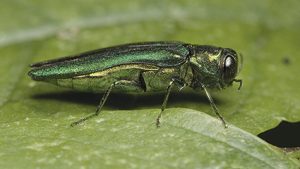
What you need to know about EAB injections || Image Source: Colorado State Forest Service (https://csfs.colostate.edu/forest-management/what-is-eab/)
People from all across the country come to Denver because of the scenic views and lush forests, but unfortunately, a great deal of the forests in the area are being destroyed by mountain pine beetles. Do you have mountain pine beetles in your trees? If so, what Denver tree services will you need?
The mountain pine beetle (MPB) is an insect native to western North American woodlands. Many people refer to them as the Black Hills beetle or the Rocky Mountain pine beetle. MPB typically affects lodgepole, ponderosa, Scotch, and limber pines, and occasionally bristlecone and piñon pines. It should be noted that when beetle populations explode, all pines in Colorado can be susceptible to an MPB infestation, even ornamental pine trees.
Millions of trees may be lost as a result of an MPB infestation. Outbreaks occur regardless of property borders and are be present in wilderness regions, mountain communities, and backyards. Windbreak or landscape pines can succumb to insects introduced in contaminated firewood from several miles away. These little bugs, which are about the size of a grain of rice, dig their way into fully-grown pine trees. Once the beetles are inside the trees, they begin to lay eggs, which disrupts the tree’s ability to send and receive nutrients. Even though the tree will try to flush out the beetles with pitch, which is a sticky, sap-like substance, the beetles usually end up killing the tree they have infested. Unfortunately, if there are outbreak conditions, there may be enough beetles that emerge from an infested tree and go on to kill several more trees the next year. Learn more about the mountain pine beetle epidemic here.
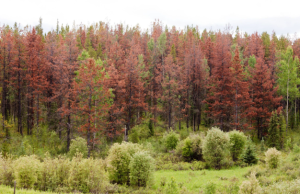
Although it’s rare that you would actually see the beetles, there are other signs of an infestation. If you think you may have a MPB infestation, there are some tell-tale signs you can look for.
The effects of mountain pine beetle infestations are devastating. Trees that have died from a MPB infestation are at risk of falling at a moment’s notice, so you must be careful to avoid trees that have been infested with mountain pine beetles. Make sure you do not have your car parked anywhere near these trees in case they fall. You should avoid standing around these trees at all times, but especially if it is windy, since the wind can cause dead trees to fall over.
Trees that have been infested by mountain pine beetles are also a huge fire hazard. In fact, the trees are considered fire hazards for up to two years after an infestation, but the time will vary depending on how long it takes for the tree to shed its red needles. If you notice some of your trees are dead because of an infestation, it’s essential that you call a tree removal service as soon as possible.
Nature does its best to control MPB infestations by way of woodpeckers and other insects, like clerid beetles, that feed on adults and larvae under the bark. However, when there are large outbreaks, it can be challenging for the circle of life to take over effectively. There are other options for managing MPB including:
Areas that are frequently attacked by MBP and other insects would typically be the first candidates for removal. Tree removal should be done only after consulting a professional and confirming an infestation has taken place.
Preventing a MPB infestation by using insecticide spray may be effective. Formulas containing pyrethroids that are registered and tested for effectiveness can be used on high-value trees near businesses, homes, and recreational areas to reduce the likelihood of an attack. Always read labels before spraying any insecticides and consult with a professional if you are unsure.
Using pheromone packets containing verbenone has been known to interfere with the attraction of incoming beetles and may be effective in reducing attacks on pine trees.
This type of treatment is done by felling the affected trees, cutting them into logs, stacking the logs, and covering them with clear plastic in an area that gets full sun. This creates a condition that MPB cannot survive.
Recently emerged beetles can be trapped using “trap trees”. Once these designated trees become infested, they will be removed and destroyed along with the beetles that are still inside.
If you believe your trees have been infested, contact a Denver tree service company as soon as possible. Splintered Forest is a leading fire mitigation and tree service provider serving the Denver area and mountain communities. We are committed to delivering the best service in the industry. Our skilled crew includes an ISA Certified Arborist, experienced tree climbers and expert tree fellers who can expertly assess and address your MPB problem. Contact us today to schedule your free, no obligation estimate.
Pruning trees is an important part of maintaining the health and appearance of your landscape, but it is important to take certain precautions when pruning in the winter months. Cold temperatures, ice, and snow can all make tree pruning more challenging and dangerous, so it is important to be prepared and take appropriate safety measures. Here are some tips for pruning trees safely in the winter months while living in Colorado.
It is important to understand the specific needs and characteristics of the trees you are pruning. The best time to prune trees is in the winter. Pests and fungal diseases present in the warmer months are usually dormant allowing for less risk to your tree’s health. If you are unsure about how to prune your trees, consider consulting with a certified Arborist or a tree care specialist.
Pruning trees in the winter can be physically demanding, so dressing appropriately will help you stay warm and comfortable. Wear layers of clothing to help regulate your body temperature, and make sure you have a hat, gloves, and other warm gear to protect your hands, head, and feet. If you will be working in the snow or on icy surfaces, consider wearing boots with good traction to help prevent slips and falls.
Using the right tools will make tree pruning safer and more effective. Make sure you have a good-quality pruning saw or lopper. If you are using a chainsaw, make sure it is in good condition and that you know how to use it safely which includes wearing all necessary personal protective equipment (PPE).
Cold temperatures, ice, and snow can all make tree pruning more difficult and dangerous. If possible, try to avoid pruning trees when the weather is extremely cold or when there is ice or snow on the ground. If you must prune trees in these conditions, take extra care to avoid slipping or falling, and be prepared for longer cutting times due to the increased resistance of cold wood.
When pruning trees in the winter, it is important to remove any damaged or diseased branches first. These branches can pose a risk to the health and stability of the tree and should be removed as soon as possible. Be sure to make clean cuts and remove the branches all the way back to the trunk or to a healthy lateral branch.
When pruning trees in the winter, have a clear purpose and plan in mind. Avoid over pruning, as this can cause stress to the tree and interfere with its natural growth patterns. Instead, focus on removing dead, damaged, or diseased branches and shaping the tree to achieve your desired appearance.
If you are unsure of the legality of the tree you are pruning based on its species or vicinity to other property lines, it is best to consult a professional before proceeding. Pruning trees during the winter months can put additional stress on the tree and should be done carefully to make sure it can grow back healthy the following season. Contact Splintered Forest for a free estimate on your winter tree pruning needs.
Many homeowners want to have mature trees on their property. They provide shade, they are pretty to look at, help provide cleaner air in your surroundings, and provide some natural beauty. The downside of trees is that they can get damaged in storms or from heavy snow or rainfall and sometimes damage other property, your home, or even your neighbor’s. Issues with a property line tree dispute can potentially cause a commotion between you and your neighbors. Below we will provide some helpful tips and tricks for dealing with tree related property damage on your property or a neighbor’s.
Please be advised, the contents of this article are not legal advice and we are not attorneys. If you are actively in a dispute we recommend you consult an attorney and do not take any actions based on these recommendations. This information is attended to help you avoid issues and disputes.
In the State of Colorado, property owners under common law have the right to cut off roots or branches that extend over their property lines. This means that you can trim branches or roots of any tree that is extending over or under your fence or property line in order to avoid other property damages or injuries. The person who is trimming the tree is legally responsible for all expenses and potential damages from trimming the tree.
Additionally, knowingly cutting, altering, or removing a boundary tree is a class 2 misdemeanor. This essentially means you cannot remove a tree that breaks your boundary line to an adjoining property. If the tree’s trunk itself is on both your and your neighbor’s property, it is the common property of the owners of the adjoining land.
Before trimming any trees that are extending over your property line, we do recommend informing your neighbors to avoid any property line tree disputes.
If your tree falls or branches fall during a storm and cause damage to a neighboring property or vehicle, it is the property owner’s responsibility to file an insurance claim. As long as the damage was not directly caused due to negligence, such as refusing to trim dead branches from a tree above a neighbor’s roof, weather events that are out of your control are not your responsibility.
However, this is one of the reasons why it’s important to have your trees assessed and trimmed properly to avoid unnecessary damage.
In the State of Colorado, property owners and residents are responsible for fallen tree debris and branches on their private property. This means that if branches fall from a storm on your property, you are responsible for cleaning them up. If the branches fall onto your neighbor’s property, they are responsible for cleaning up debris on their side of the property line.
A boundary tree is any tree that has a trunk that is within the invisible line that borders your property and the adjoining land. When dealing with issues on a boundary tree, it is important to cooperate with your neighbor as these trees are common property between both of you. You should work together to decide whether to trim or remove a boundary tree as this can be a class 2 misdemeanor in the State of Colorado. So, if you know you have a boundary tree and aren’t friendly with your neighbor yet, you may as well strike up a conversation to avoid a potentially unpleasant situation in the future.
You can refer to Title 18 Statute for more information.
Many of these reasons are why it is best to consult a professional when you may have a confusing tree issue to make sure you make the right decision that is both safe and legal and likely to keep you out of any feuds in your neighborhood. If you have recently resolved a property line tree dispute and need help with tree trimming or tree removal, contact the experts at Splintered Forest.